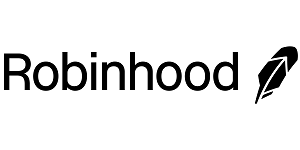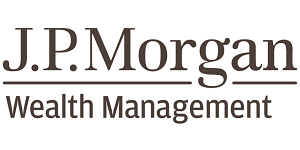Look, everyone knows that money doesn’t grow on trees, but dividend stocks might actually be the next best thing. When you invest in dividend stocks, you get paid for that single investment as long as you own the asset, and the company continues to pay dividends.
Okay, so it might sound too good to be true. But the reality is, you might be surprised at the opportunities available to beginners who learn how to invest in dividend stocks.
What are dividends?
First things first, what are dividends exactly?
When a company makes money, they have various choices about what to do with a profit surplus. They can:
- Reinvest the money for growth.
- Pay off debt.
- Buy back stock.
- Pay dividends.
- Cross between all of the above.
In plain English, a dividend is a payment made to investors that own stock in that company. It’s paid as an equal amount per share, and that figure is determined by the company’s profits (as well as their dividend policy).
You can think of it as your share of a business’s earnings for investing in a company. Another way to look at dividends is as a quarterly bonus for being a partial owner.
These payments can be paid monthly, quarterly, or annually. On occasion, there are also special dividends paid as a larger one-time disbursement, usually after a particularly strong earnings period to distribute profits. Costco issued a $10 special dividend in 2020 to the delight of shareholders, for instance.
As an investor, you can choose to take the dividend as a cash payment or reinvest the proceeds to buy more shares of the company. The latter’s important, so more on that a little later.
Why do companies pay them?
Companies are under no obligation to pay their investors dividends, yet many still do. There are a couple of reasons for this practice.
First, dividend payments attract investors. They do so by signaling the following:
- Because dividends produce a steady stream of income, dividend-paying stocks are very attractive to retirees looking for cash flow or long-term investors looking for immediate positive returns, cumulative growth, and diversified portfolios.
- Companies that pay dividends tend to demonstrate they’re stable and in a strong cash flow position. For investors looking for security, dividend stocks are perceived as a relatively low-risk investment.
Having a dividend payment policy also forces a company to have a certain amount of financial discipline. When an organization has earmarked funds for dividends, they have to stick to their laid-out plans and resist taking on high-risk, experimental, or “power grabbing” projects that put the company at risk.
How to invest in dividend-paying stocks
When it comes to investing, the general rule for any asset class is “buy low, sell high.” The strategy for investing in dividend-paying stocks, however, is slightly different.

Instead of looking for the next Amazon or Tesla, or trying to ride a stock on a wave of good news, the trick is to purchase shares in large, stable companies with a history of paying dividends. It’s even better if you can find companies that have steadily increased their payouts over a span of several years.
Below, I’ll give you step-by-step instructions on how to find opportunities and then begin purchasing your stock.
1. Open and fund a brokerage account
Before you can purchase dividend stocks, you need an account with a broker. Fortunately, there are plenty of top online brokerages for beginners that let you trade with ease, so you don’t have meet with a more expensive financial advisor.
In some cases, you can buy stocks directly from the company in what’s called a “direct stock plan.” While that allows you to avoid paying commissions to a broker, you’ll often still have to pay a fee to the company for this service.
Further, there are often restrictions, such as having to be an employee of the company or already owning the stock. And that’s just the tip of the iceberg. Usually, the shares can only be bought and sold under specific conditions, limiting your freedom and flexibility for trading.
With the ease-of-use and convenience of modern online brokerages, I recommend opening and funding an online brokerage account. Now comes the tricky part – finding the right brokerage for your needs. There’s wide variation in services, perks, tools, and usability.
All that said, these are some options I recommend for investing in dividend stocks
Robinhood: Best to invest in dividend stocks for new investors
Robinhood makes buying and selling stock accessible and straightforward for anyone, especially beginning investors. Their streamlined platform is easy to use, and you can get started trading dividend stocks with as little as $1.
Robinhood is a popular stock trading and investing app that offers zero-commission trades on thousands of investments, including stocks, starting with as little as $1.
With beginner-friendly features and easy-to-read charts, Robinhood is great for new investors and there's advanced features even more seasoned investors can appreciate.
- Commission-free trading
- Easy to use, well-displayed dashboard
- No obligation or minimum account balance
- No bonds or mutual funds
Not only that, but you can also invest in fractional shares. This means that if you’re starting out and dying to buy Apple stock, but you don’t have the amount to buy a full share, you can buy a portion of the stock. You can then walk into the Apple store like you own the place – keyword like. You can purchase fractional shares in Robinhood either by specifying dollar amount (example $10) or amount in shares (0.5 for half of a share).
Fractional shares receive dividends just like a full share would, only instead proportional to the amount you own, and both are eligible for dividend reinvestment (DRIP) with Robinhood. This automatically reinvests the received dividend payments back into the underlying dividend-paying stock or ETF.
If you’re just getting started with trading, Robinhood may be an ideal place to start and that’s why it’s one of the best brokerage account options we recommend for beginners to start investing in the best dividend stocks.
» MORE: Read out full Robinhood Review
J.P. Morgan Self-Direct Investing: Best to invest in dividend stocks for Chase customers
One of my other top choices, J.P. Morgan Self-Directed Investing, is, as you can likely tell from the name, run by J.P. Morgan Chase. If you’re already with Chase, you’ll love how simple and seamless adding this account to your dashboard will be.
J.P. Morgan Self-Directed Investing offers Chase clients tremendous convenience and new investors an intuitive investing platform with unlimited commission-free online stock, ETF and options trades.
It's ideal for those who are interested in learning the market with no investment minimums attached.
- Exceptional customer support
- Simple, intuitive interface
- Easy integration for existing Chase customers
- Advanced traders may want additional functionality
- Portfolio Builder requires $2,500 min.
Like Robinhood, J. P. Morgan Self-Directed Investing charges no commissions on trades (with the exception of options contracts) and has no minimum account balance starting from day one to open an account. J.P. Morgan Self-Directed Investing offers plenty to help new investors ease into trading, from a clean and simple interface to a dedicated customer support line in case anything goes awry.
You’ll be provided with the option to reinvest dividends with J.P. Morgan Self-Directed Investing to take advantage of the benefits we expound on below.
» MORE: Check out our J.P. Morgan Self-Directed Investing Review
2. Look for quality, stable companies
As a general rule, companies that pay dividends are stable, with a long track record of success. However, that’s not always the case, so you still have to do your research.
You probably have an idea forming in your head already. Brands that are household names, like Coca Cola (KO), or products you use every day are most likely publicly traded companies with a history of paying dividends.
To give you some guidance on how to make your selections, I turn to Warren Buffett, arguably the most successful investor of all-time. Instead of following trends and media frenzy, Buffett takes a holistic approach in his analysis, aiming to understand what drives a company’s earnings and how viable they are as a business.
He also believes in investing for the long-term, famously saying in his 1996 letter to shareholders of Berkshire Hathaway:
“If you aren’t willing to own a stock for 10 years, don’t even think about owning it for 10 minutes.”
To give you a more specific framework, here’s a glimpse of Buffett’s methodology to company analysis:
Company performance
There are many stats to look at when evaluating company performance, but a shareholder’s return on investment is one of the most telling. In the stock trading world, this figure is represented as ROE (return on equity). It’s calculated by dividing net income by shareholder’s equity.
Return on Equity = Net Income / Average Shareholders’ Equity
You can find these figures on the company’s balance sheet.
Debt
Debt isn’t necessarily a bad thing. Companies often use it as a lever to grow. However, if you’re looking for stocks that are going to pay the highest dividends, you’ll want to know what a company’s debt-to-equity (D/E) ratio is. If it’s on the high end, the company will have to divert profits to serving that debt instead of paying dividends.
Debt-to-Equity Ratio = Total Liabilities / Shareholders’ Equity
Profit margins
Profits are vital for any business to operate in the long-term, and in order to pay dividends, a company must be profitable. The key to look for is a steady or increasing profit margin. When you see that, dividend payments are likely to continue and even rise. However, a decreasing profit margin can put future dividend payments in jeopardy.
Age
Making a data-driven investment decision means you have to have plenty of data. Buffett suggests putting your money into companies that have been public for at least 10 years.
Reliance on commodities
No one operates in a bubble, but being reliant on commodities with uncertain supply can put a company’s profits at risk. Specifically, companies that are reliant on oil and gas for their operations are vulnerable when the price of that commodity rises.
Price
And finally, the price of a company’s stock is also a vital consideration. How do you know if a stock is priced correctly, it’s overvalued or undervalued? It starts by determining the intrinsic value of the company. And that’s where the magic happens. Keep reading; I’m covering that next.
3. Research the company’s financials to find undervalued stocks
Finding undervalued stocks is a treasure hunt. An undervalued stock is one that is trading for less than it’s worth. By identifying these stocks, you can pick them up at a discount.
It’s kind of like shopping for designer clothes on the clearance rack. Except, these stocks aren’t out of season.
One of the reasons that a stock is undervalued is because investors acted irrationally on financial news. When a story is good or bad, investors tend to pull the trigger and buy or sell stock based on a single story. The trading volume increases and the momentum accelerates in one direction. And, when the markets overreact, you can find some incredible opportunities for dividend investing.
So, how do you distinguish between an undervalued or appropriately valued stock? There are a couple of key metrics to look for:
- Price-to-book (P/B) – This ratio is the total value of a company’s assets divided by the stock price. When the stock price is lower than the current value of the assets, that’s a potential sign that the stock is undervalued.
- Price-to-earnings (P/E) – The P/E ratio compares the market value of each share to the earnings per share. Expressed as a ratio, higher numbers indicate a potentially overvalued stock. You’ll want to compare historical trends as well as compare your potential stock target to other companies in the same industry.
- Free cash flow – Cash flow is the lifeblood of a business. It indicates that there’s money left over after all expenses have been paid. This number shouldn’t be taken as gospel without looking at the quarterly or annual reports and income statements and understanding how the business reports depreciation and other line items. However, you can get a good idea of cash flow by looking at the cash flow from operating activities on the statement of cash flows.
As you can imagine, this process can be tedious and laborious. To help simplify it and allow you to see these figures at a glance without having to dig too deep, you can use a stock market quote website that calculates and reports all of this for you in real-time.
There are a variety of free and paid tools that do this task. My current favorite is Yahoo! Finance. There’s a free version that’s fully functional and a premium version that allows you to go back into 40 years of financial history.
4. Read the stock’s quote
As you get ready to buy a dividend stock, you’ll want to look at more than just the latest market price and the last dividend payment. To execute the trade, you’ll also have to evaluate and understand real-time information that’s displayed in your trading platform.
You can also look at daily charts using stock market tracking tools like Yahoo! Finance to get this information.
For investors that want to make money with dividends, checking the forward dividend and yield numbers is going to give you a look at what you can expect to earn. Most quoting systems will show you this information while also specifying how often dividends are paid.
There are some other numbers to get acquainted with, especially when you start trading in real-time.
- Ask – Also called the offer price, this represents the lowest price that someone who owns the stock is willing to sell it for.
- Bid – The highest dollar amount that a buyer is willing to pay for the stock.
- Last Price – Also called market price, this is the price that the stock last traded at.
- Volume – The volume is the number of shares traded in a day. High volume means that there are plenty of buying and selling opportunities for the stock, which is also referred to as liquidity. The more liquid a stock, the easier it is to buy or sell because more people that want in on the action.
- Beta – With dividend stocks, you’re looking for stability, not volatility. Beta is a volatility measurement that shows how much a stock is moving compared to the overall market. When the number is greater than 1, it means that it’s more volatile than the market.
5. Place your order
The investing world can get complicated, and there are a lot of ways to structure a trade. When you’re getting started, I recommend sticking to the four most common order types:
- Market Order – When you’re ready to buy the stock, you issue a market order. This means that the stock will be bought immediately on your behalf. Keep in mind that markets move quickly, so the bid you put in might not be the exact price that the order is executed at.
- Limit Order – For investors that want more control over at what dollar amount their order is executed, they can specify a limit order. This puts a cap on what they’ll spend on a trade. For example, if you want to buy a stock for no more than $20, you would place a limit order.
- Stop Order – Also called a stop-loss order, this is when you specify to buy or sell a stock when it reaches a specific price. This price is the “stop price.”
- Buy Stop Order – While a stop order specifies instructions for buying or selling a stock, a buy stop order is on the buy-side only. This is more common in the realm of shorting stocks because it helps limit losses or protect profits. It’s specified above the current market price.
6. Take advantage of DRIP investing
When the company you own stock in pays dividends, you have two choices – take it as a deposit to your brokerage account or reinvest the dividends in the same company’s stock. A DRIP, short for dividend reinvestment plan, has several benefits you can take advantage of:
Compound interest
If you’re a long-term investor, then you’ll see your investment in a stock multiply by reinvesting the dividends instead of cashing out. You won’t get rich overnight, but if you park your money in a dividend stock for 10+ years and continue to reinvest the dividends, you’ll start to see the compounding benefits.
DRIP gives you fractional shares
Instead of waiting until you have the money to purchase a full stock share, dividend reinvestment allows you to get portions of the stock and continue to build ownership.
7. Monitor, rebalance, and find new stocks as necessary
It can be tempting to make a one-time stock purchase and let a DRIP go to work for you on autopilot. However, your portfolio can shift even if you don’t make any changes to your stock holdings.
Whenever you invest your money, it’s a smart idea to keep an eye on how your stocks are performing. This doesn’t mean chaining yourself to a triple monitor and watching every price fluctuation like a hawk. It does mean doing a sanity check here and there.
The brokerage accounts I recommended all have mobile trading platforms, so you can monitor your investments daily from your phone.
Assuming your portfolio is mostly or exclusively stocks, you should probably seek out diversification opportunities. There’s nothing wrong with holding only dividend stocks, but they should be in different sectors so that you can hedge your bets.
So why should you invest in dividend stocks?
Dividend stocks get a bad rap for being dull and low moneymakers. If you choose your dividend stocks wisely, though, nothing could be further from the truth.
They’re also known as being an ideal investment vehicle for older people, and while that’s true, younger generations are also beginning to see the value of generating steady income in an asset that also appreciates.
Here are the four main benefits of dividend stocks that demonstrate why they’re a smart buy for investors.
- Dividend stocks are the ultimate form of passive income. You get paid regularly just for owning a stock. Once you do the heavy lifting of making the trade, your work is over. You can sit back, relax, and watch the earnings come in.
- Unlike day traders and penny stock evangelists, investors that choose dividend stocks don’t have to watch the market like a hawk. They can check their shares once or twice a day (or week) to ensure that the company hasn’t been liquidated or sued. Then they can relax knowing that they invested in a business that’s in it for the long haul. There are no sketchy startups or fly by night operations in the realm of dividend stocks.
- With dividend stocks, you get to take advantage of compound interest by utilizing a DRIP (dividend reinvestment plan). On autopilot, your money will grow over time.
- Dividend stocks offer a reliable stream of income. This benefit is particularly relevant for retirees looking for cashflow during their golden years.
Summary
Though investing in dividend stocks is a potentially lucrative investment strategy, please keep in mind that there’s no guarantee that you’ll make a positive return. Your ending may not match how it did for Warren Buffet and his beloved, Coca-Cola.
The stock could drop more than what you get paid in dividends. The company could go out of business. Or, the company could stop slash dividends or stop paying them altogether for a period (GE is one of the more notable companies to do this).
However, if you take some time to learn the basics, you’ll know more than 99% of your peers. And, I hope you’ve come to the realization that investing in dividend stocks isn’t just for retirees.
If you’re looking to start a retirement fund, choosing the right dividend stocks and holding them for the long-term could be your ticket to true financial freedom in your golden years.
Hopefully, this guide equipped you with the knowledge of what to look for in a company to get started with this investment strategy. By picking the best stocks that yield the highest returns for your portfolio, you’ll put more money in your pocket long-term.




